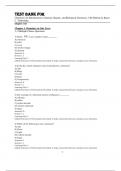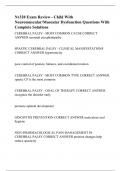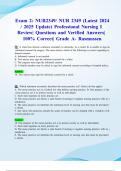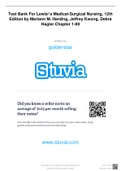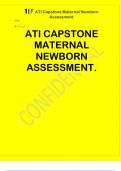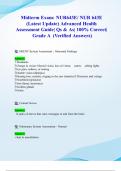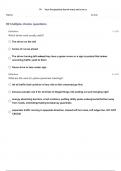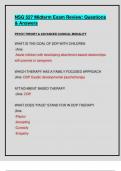Exam (elaborations)
Test Bank For Chemistry An Introduction to General, Organic, and Biological Chemistry, 14th Edition by Karen C. Timberlake Chapter 1-18
- Course
- Institution
Test Bank For Chemistry An Introduction to General, Organic, and Biological Chemistry, 14th Edition by Karen C. Timberlake Chapter 1-18
[Show more]
